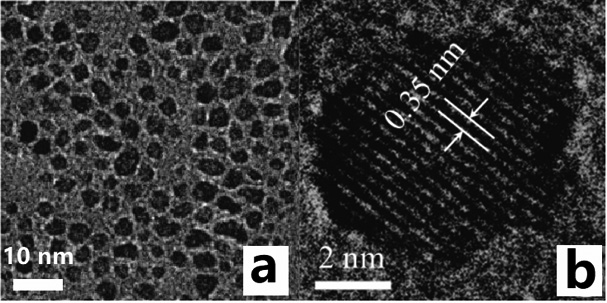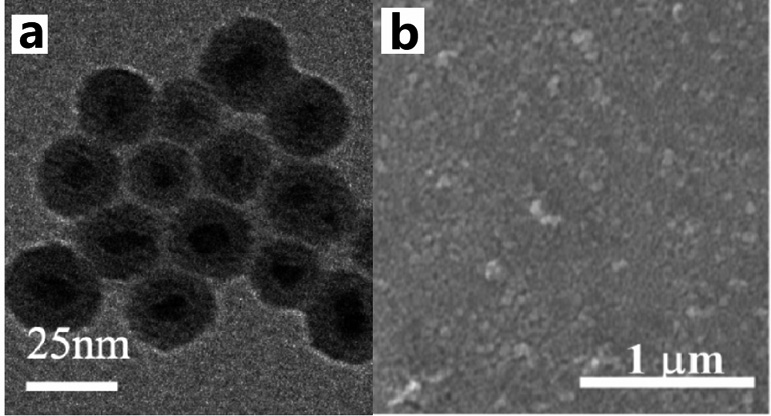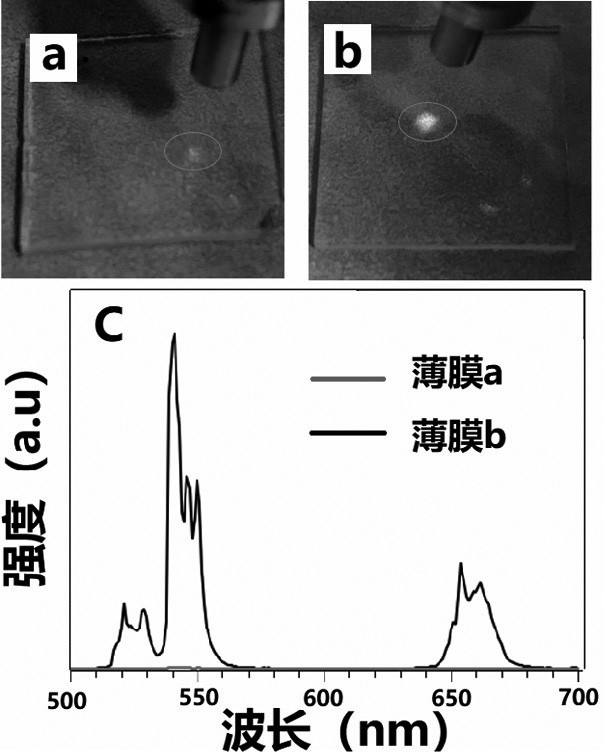TiO2:W nano-particles, and preparation method and application thereof
A nanoparticle and nanomaterial technology, applied in the field of fluorescent materials, can solve the problems of small absorption cross section, narrow excitation band, low luminous efficiency, etc., and achieve the effects of low cost, simple preparation method and high synthesis efficiency
- Summary
- Abstract
- Description
- Claims
- Application Information
AI Technical Summary
Problems solved by technology
Method used
Image
Examples
Embodiment 1
[0042] A TiO-based 2 :W plasmon resonance effect enhanced method for upconversion luminescence, the steps are as follows:
[0043] (1) Add 1 mmol Ti(OEt) 4 , 0.15 mmol WCl 6 , 8 mL ODE, 0.5 mL OLA, 0.5 mL OA, 10 mmol ODAL and 0.8 mmol NH 4 F was mixed in a 50 mL three-necked flask.
[0044] (2) Step (1) The mixture was heated to 60 °C under nitrogen to start vacuuming, and heated to 110 °C under vacuum for 20 min.
[0045] (3) Step (2) The reaction mixture was rapidly heated to 280 °C in a nitrogen atmosphere and kept for 1 h.
[0046] (4) After the reaction in step (3), cool down to 60 °C, add acetone and stir for 10 minutes, centrifuge at 8000 rpm for 3 minutes, disperse into n-hexane, and wash three times with n-hexane and acetone 1:1 (volume ratio) . Finally, the precipitate was dispersed in 25 mL of n-hexane to obtain TiO with a concentration of 0.04 mmol / mL 2 : W solution.
[0047] figure 1 It is the TiO synthesized in Example 1 2 : Transmission electron micros...
Embodiment 2
[0060] A TiO-based 2 : W plasmon resonance effect enhanced method for upconversion luminescence, the steps are as follows:
[0061] (1) Add 1 mmol Ti(OEt) 4 , 0.10 mmol WCl 6 , 8 mL ODE, 0.5 mL OLA, 0.5 mL OA, 10 mmol ODAL and 2 mmol NH 4 F was mixed in a 50 mL three-necked flask.
[0062] (2) Step (1) The mixture was heated to 60 °C under nitrogen to start vacuuming, and heated to 110 °C under vacuum for 20 min.
[0063] (3) Step (2) The reaction mixture was rapidly heated to 280 °C in a nitrogen atmosphere and kept for 1 h.
[0064](4) After the reaction in step (3), lower the temperature to 60 °C, add acetone and stir for 10 minutes, centrifuge at 8000 rpm for 3 minutes, disperse into n-hexane, and wash three times with n-hexane and acetone 1:1 (volume ratio) . Finally, the precipitate was dispersed in 25 mL of n-hexane to obtain TiO with a concentration of 0.04 mmol / mL 2 : W solution.
[0065] Figure 4 It is the TiO synthesized in Example 2 2 : Transmission elec...
Embodiment 3
[0078] A TiO-based 2 : W plasmon resonance effect enhanced method for upconversion luminescence, the steps are as follows:
[0079] (1) Add 1 mmol Ti(OEt) 4 , 0.10 mmol WCl 6 , 8 mL ODE, 0.5 mL OLA, 0.5 mL OA, 10 mmol ODAL and 2.6 mmol NH 4 F was mixed in a 50 mL three-necked flask.
[0080] (2) Step (1) The mixture was heated to 60 °C under nitrogen to start vacuuming, and heated to 110 °C under vacuum for 20 min.
[0081] (3) Step (2) The reaction mixture was rapidly heated to 280 °C in a nitrogen atmosphere and kept for 1 h.
[0082] (4) After the reaction in step (3), lower the temperature to 60 °C, add acetone and stir for 10 minutes, centrifuge at 8000 rpm for 3 minutes, disperse into n-hexane, and wash three times with n-hexane and acetone 1:1 (volume ratio) . Finally, the precipitate was dispersed in 25 mL of n-hexane to obtain TiO with a concentration of 0.04 mmol / mL 2 : W solution.
[0083] Figure 7 It is the TiO synthesized in Example 1 2 : Transmission e...
PUM
 Login to View More
Login to View More Abstract
Description
Claims
Application Information
 Login to View More
Login to View More - R&D Engineer
- R&D Manager
- IP Professional
- Industry Leading Data Capabilities
- Powerful AI technology
- Patent DNA Extraction
Browse by: Latest US Patents, China's latest patents, Technical Efficacy Thesaurus, Application Domain, Technology Topic, Popular Technical Reports.
© 2024 PatSnap. All rights reserved.Legal|Privacy policy|Modern Slavery Act Transparency Statement|Sitemap|About US| Contact US: help@patsnap.com










